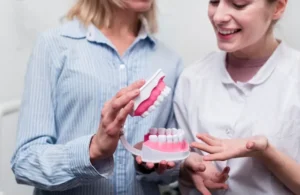Tooth sensitivity can be a bothersome and painful condition that affects many individuals. It occurs when the enamel protecting the teeth wears down or when gum recession exposes the underlying dentin. This leads to the discomfort or sharp pain when consuming hot, cold, sweet, or very acidic foods and drinks. Identifying the specific triggers and employing various methods to reduce discomfort—such as using desensitizing toothpaste, adopting gentler brushing techniques, or undergoing certain dental procedures—can significantly alleviate symptoms and improve oral health.
Causes of Tooth Sensitivity
Tooth sensitivity is a common dental issue that affects a significant portion of the population. It can be triggered by hot, cold, sweet, or acidic foods and drinks, and it often causes sharp, sudden pain. Understanding the root causes of tooth sensitivity can help in effectively managing and preventing this uncomfortable condition. Here, we will delve into some of the primary causes of tooth sensitivity.
Among the various reasons for tooth sensitivity, three are particularly prevalent: enamel wear and tear, gum recession, and tooth decay and damage. These factors can expose the underlying dentin, making teeth more sensitive to external stimuli. Let’s explore each of these causes in more detail.

Enamel Wear and Tear
The outermost layer of the tooth, known as enamel, serves as a protective barrier. However, this enamel can gradually wear away due to a variety of factors. When the enamel is compromised, it exposes the underlying dentin, which contains tiny tubules leading to the nerve center of the tooth. When these tubules are exposed, sensitivity to temperature changes and certain foods can occur. Several common habits can contribute to enamel wear and tear, including:
- Brushing too hard or using a toothbrush with hard bristles
- Consuming acidic foods and beverages
- Teeth grinding (bruxism)
- Frequent consumption of sugary snacks and drinks
Preventative measures, such as using a soft-bristled toothbrush, avoiding abrasive toothpaste, and limiting acidic and sugary foods, can help preserve enamel and reduce sensitivity.
Gum Recession
Gum recession occurs when the gum tissue around the teeth pulls back or wears away, exposing more of the tooth or the tooth’s root. This condition can make teeth more sensitive because the roots, which aren’t protected by enamel, are now exposed. The roots contain many small tubules that lead directly to the tooth’s nerve center.
Several factors contribute to gum recession, including:
- Periodontal disease (gum disease)
- Improper brushing techniques
- Hormonal changes
- Tobacco use
Treatment often involves improving oral hygiene practices and may also include procedures like scaling and root planing to remove plaque and tartar buildup. In some cases, surgical treatments such as gum grafting may be necessary to cover exposed roots and reduce sensitivity.
Tooth Decay and Damage
Tooth decay and damage can be major contributors to tooth sensitivity. When a tooth has a cavity or is cracked, the dentin is exposed, which can cause sensitivity to hot, cold, sweet, or acidic substances. Additionally, tooth decay can result in the formation of holes or gaps in the enamel, further exacerbating sensitivity.
Common causes of tooth decay and damage include:
- Poor oral hygiene
- High sugar diet
- Consuming acidic foods and drinks
- Physical trauma to the tooth
Treating tooth decay generally involves filling cavities, while damaged teeth may require crowns, bonding, or even root canal treatments in severe cases. Preventative care, such as good oral hygiene and regular dental check-ups, is essential to avoid decay and minimize the risk of damage.
Understanding the causes of tooth sensitivity is crucial in managing and preventing it effectively. For more in-depth information on related topics, be sure to explore our other articles.
Signs and Symptoms of Tooth Sensitivity
Tooth sensitivity is a common dental issue that affects many people worldwide. It can cause significant discomfort and disrupt daily activities such as eating and drinking. Identifying and understanding the signs and symptoms of tooth sensitivity is crucial in seeking timely treatment and avoiding further dental complications. Below, we’ll explore some of the most common indicators.
People experiencing tooth sensitivity often report a range of symptoms. These can vary in intensity and duration, but they generally include a sharp pain or discomfort when the teeth are exposed to certain stimuli. This discomfort can be a sign that the protective layers of the teeth, such as enamel, are compromised.
Awareness of these symptoms can help in seeking dental advice promptly. Early recognition and intervention can prevent the condition from worsening and help maintain oral health. The following sections detail the different types of pain and discomfort that are typical in cases of tooth sensitivity.
Sharp, Sudden Pain
One of the most common symptoms of tooth sensitivity is sharp, sudden pain. This pain is often triggered by specific actions or stimuli, such as biting into hard food or brushing the teeth with a hard-bristled toothbrush.
This type of pain is usually a result of exposed dentin. The dentin is the layer beneath the enamel that contains microscopic tubules filled with nerve endings. When the enamel wears down or the gums recede, these tubules become exposed, leading to pain.
Sharp pain can also be indicative of other dental issues, such as tooth decay or cracks in the teeth. Therefore, it is essential to seek a professional dental evaluation to determine the exact cause of the discomfort and receive appropriate treatment. Early intervention can prevent more severe dental problems.
Sensitivity to Temperature
Another common symptom is sensitivity to temperature extremes. Many individuals with tooth sensitivity experience discomfort when consuming hot or cold foods and beverages. This sensitivity occurs because the temperature changes can penetrate through the exposed dentin and reach the nerves inside the tooth.
Individuals might notice a lingering discomfort after consuming something hot or cold, which can last for a few seconds to several minutes. This type of sensitivity is often indicative of enamel erosion or gum recession, both of which expose the dentin.
Temperature sensitivity can also be a result of dental treatments like bleaching or having a filling placed too close to the nerve. While this sensitivity might be temporary, it is important to monitor its duration and intensity. Persistent sensitivity should be reported to a dentist.
Discomfort from Sweets
Many people with sensitive teeth also report discomfort when eating sweets. This can include sugary snacks, desserts, or even certain fruits. The sugars can cause a reaction in the exposed dentin, leading to sharp or lingering pain similar to that caused by other stimuli.
Sweets can stick to the teeth and interact with bacteria in the mouth to produce acids. These acids can further weaken the enamel and dentin, exacerbating sensitivity. Good oral hygiene and reducing sugar intake can help mitigate this symptom.
It is important to note that while sweets can cause discomfort, they can also contribute to tooth decay, which can further complicate dental health. Therefore, maintaining a balanced diet and proper oral hygiene practices are crucial for minimizing both sensitivity and the risk of decay. Understanding these signs and symptoms is the first step in addressing tooth sensitivity. It allows individuals to take proactive measures to protect their oral health. For more information on managing tooth sensitivity and other dental issues, consider reading our other articles on the topic.
Diagnosis and Professional Treatments
Proper diagnosis and professional treatments are the cornerstones of effective dental care. Accurate diagnosis allows for tailored treatment plans that address individual needs, while professional treatments offer specialized care that can’t be replicated by at-home remedies. Understanding the importance and scope of these elements is crucial for maintaining optimal oral health.
Professional dental care extends beyond the daily brushing and flossing routine. It involves comprehensive examinations and treatments that target both preventive and corrective aspects of dental health. The integration of modern technology and advanced techniques in professional care further enhances the effectiveness of these treatments.
This section will delve into the critical aspects of diagnosis and professional treatments, focusing on dental examinations and fluoride treatments. These components play a significant role in the prevention and management of dental issues, ensuring long-term oral health.
Dental Examination
A dental examination is a systematic evaluation of the oral cavity, including teeth, gums, and other supporting structures. It is the first step in identifying existing problems and potential risks. Dentists use a combination of visual assessments, X-rays, and sometimes more advanced imaging techniques to create a comprehensive view of a patient’s oral health.
The examination typically includes checking for cavities, gum disease, oral cancer, and other abnormalities. Regular dental exams are essential because they can detect issues before they become severe. The American Dental Association recommends at least one dental check-up every six months to maintain optimal oral health.
During the examination, dentists also evaluate the alignment and bite of the teeth, which can affect both aesthetics and function. Identifying misalignments early on can lead to more effective and less invasive treatments, such as braces or aligners. Overall, dental examinations are fundamental for the early detection and prevention of oral diseases.
Fluoride Treatments
Fluoride treatments are a key preventive measure in modern dentistry. Fluoride, a naturally occurring mineral, helps to rebuild and strengthen the enamel, making teeth more resistant to decay. This treatment is particularly beneficial for children, but adults can also derive significant benefits from it.
During a fluoride treatment, a high concentration of fluoride is applied to the teeth via a gel, foam, or varnish. The process is quick and painless, typically lasting only a few minutes. The fluoride solution is then left on the teeth for a short period to allow absorption.
Studies have shown that fluoride treatments can reduce tooth decay by up to 40%, making it a highly effective preventive tool. Dentists recommend fluoride treatments every six months for children and adults who are at a higher risk of dental caries.
Beyond professional treatments, many communities add fluoride to their water supply to ensure a basic level of dental protection for all residents. This public health measure has been proven to significantly decrease the incidence of cavities across populations.
Diving deeper into the science and practices of dental care can equip you with the knowledge to make informed decisions about your oral health. Explore other articles to learn more about the intricacies of various dental treatments and their impact on overall well-being.
Home Remedies for Tooth Sensitivity
Tooth sensitivity, also known as dentin hypersensitivity, affects many people worldwide. It can cause discomfort and pain when consuming hot, cold, sweet, or acidic foods and drinks. While there are clinical treatments available, many individuals prefer to begin with home remedies to alleviate their symptoms. These remedies can be effective and are often easy to integrate into your daily routine. Below are some of the most recommended home methods for managing tooth sensitivity.
Incorporating these remedies can provide temporary relief and protect your teeth in the long run. However, if the sensitivity persists, it’s crucial to consult a dental professional to rule out underlying issues such as tooth decay, gum disease, or cracked teeth. Here, we will explore some simple yet effective home remedies to help you manage tooth sensitivity.
Using Desensitizing Toothpaste
Desensitizing toothpaste is formulated to help reduce tooth sensitivity over time. These toothpastes contain compounds like potassium nitrate or stannous fluoride that help block the pathways through the teeth that attach to nerves. This can help you experience less sensitivity over time.
To maximize the benefits:
- Brush twice daily with a desensitizing toothpaste.
- Be consistent in your usage for at least a few weeks to notice significant improvement.
- Pair with a soft-bristled toothbrush to avoid aggravating sensitive areas.
If symptoms persist, consult your dentist for further diagnosis and treatment options.
Salt Water Rinse
A salt water rinse is one of the simplest and most effective remedies for tooth sensitivity. Salt has natural antiseptic properties that can help reduce inflammation and bacteria in the mouth. By rinsing with salt water, you can create a more balanced oral environment, which may alleviate sensitivity.
To make a salt water rinse:
- Mix one teaspoon of salt in a glass of warm water.
- Swish the solution around your mouth for about 30 seconds.
- Spit it out and rinse with plain water afterward to remove the salty taste.
Repeat this process twice daily, especially after meals, for best results.
Avoiding Acidic Foods
Acidic foods and beverages, such as citrus fruits, soda, and wine, can erode the enamel on your teeth, leading to increased sensitivity. Managing your diet by reducing the intake of acidic foods can help protect your teeth and reduce sensitivity.
To minimize exposure to acids:
- Consume acidic foods and drinks in moderation.
- Rinse your mouth with water after consuming acidic items to help neutralize the acids.
- Use a straw when drinking acidic beverages to minimize contact with your teeth.
Additionally, maintaining good oral hygiene and regular dental check-ups will further help in managing tooth sensitivity.
For more detailed insights on oral health, you can explore other articles that delve into topics such as advanced dental treatments, prevention strategies, and nutrition for oral health.
Tooth Sensitivity: Identification and Methods to Reduce Discomfort
Understanding tooth sensitivity can help manage and reduce discomfort effectively. Here’s a common question answered to aid in identifying and treating sensitive teeth.
What causes tooth sensitivity and how can I reduce the discomfort?
Tooth sensitivity is primarily caused by the exposure of dentin, the layer beneath the tooth enamel, which becomes exposed due to enamel erosion or gum recession. To reduce discomfort, use desensitizing toothpaste, avoid acidic foods and drinks, maintain good oral hygiene, and consider using a soft-bristled toothbrush. Additionally, visit your dentist regularly for appropriate treatments and advice specific to your condition.

My name is Salman Kapa, a 73-year-old expert in bone regeneration and dental implantology. With decades of experience in the field, I am dedicated to advancing our understanding of oral health and hygiene. Through my research and writing, I aim to contribute to the development of innovative solutions in dental care.




